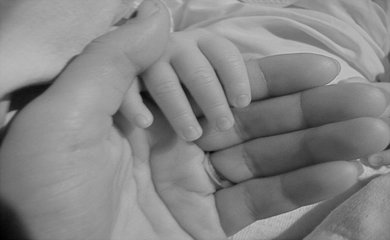While the United States is fawning over Downton Abbey (how about that shocker in Sunday’s episode, eh?), UK viewers are enjoying the return of Call the Midwife, which just started its second series to critical acclaim. (It will be arriving on US shores via PBS in March.) The show is getting extremely high ratings in Britain, but the buzz hasn’t reached the United States, leading me to wonder what it is about this historical drama in particular that seems to be captivating UK viewers while leaving those in the US cold.
Call the Midwife takes us to East London in the 1950s, where a group of nurses working alongside an order of nuns provide midwifery services to the community through home as well as hospital-based births. It’s a quiet sort of drama with a certain sentimentality that veers to the mawkish at times, but I don’t agree with The Guardian’s assessment of the programme as ‘warm hearted.’
There’s nothing sweet and innocent about a show that exposes very harsh sides of life. East London in the late 1950s is a far cry from the glamour of Downton Abbey, that’s for sure. It was a working class community filled with many struggling people, including women who bore child after child with very limited space between; one of the most common scenes in the show is that of a woman trailed by older children, belly swollen, waiting in the clinic for her examination.
‘Men,’ our narrator wryly notes in the opener to series two, ‘brought us nothing but trouble.’
We’ve already seen a ship captain who pimps out his own daughter on board his ship, an abusive husband, a neglectful mother, and the tragic death of an infant in this series, and there is definitely more to come. Call the Midwife is about a world of wonder and amazement, but also of inevitable sadness and heartbreak, too. Positive outcomes in midwifery are far more common than negative ones, of course, but midwifes working in a low-income community with women who lack access to education and reject or don’t understand birth control face rough odds when working with their patients. Poverty can be cruel, and difficult to compensate for.
It’s a programme with the gloss of the 1950s, complete with nostalgic camera filters, but it doesn’t grab audiences like so many other period dramas. I suspect that the answer to this lies in the subject matter. It’s certainly not that the 1950s are inherently boring or that the drama in Call the Midwife isn’t human or compelling.
The truth is that this programme is about women and babies, about delivering children and life in a working class community. These are not subjects that many US viewers find sexy and fascinating, not like Madison Avenue in the 1960s (Mad Men), Atlantic City in the 1920s (Boardwalk Empire), or, for that matter, rural England in the 1920s (Downton). Mothers and children are largely absent from US television, and it’s not just because networks don’t know what to do with them or how to fit them into larger narratives.
It’s because there’s an active disinterest in accepting mothers as part of society, let alone their children. The idea of a show that centres round mothers and children is utterly alien to many US audiences because they cannot fathom the idea of a world in which mothers and children are important and deserve to occupy equal space. The drama in Call the Midwife is in the value of the women and the services they provide, but it’s also in the interactions they have with each other and their parents, both mothers and children. This is one of the few places on television in which mothers aren’t shoved to the side, but are in fact at the heart of the drama and scene setting.
US audiences may pick up on the great drama that is Call the Midwife with more interest during this series as the show picks up buzz over the next few weeks, but it’s doubtful it will ever be as well-received as it is in the UK, where it seems to simultaneously capture a sense of nostalgia for a bygone era which many people mistakenly believe was simpler or easier, and acknowledges a certain piece of British heritage.
There is also something quintessentially British about the show itself, which may be another reason US audiences haven’t been seduced by the lure of yet another costume drama; Call the Midwife has a certain tone to it that may put some viewers off. It is not an export product for Anglophiles with a starry-eyed vision of Britain, but is a very domestic drama that, like Marmite, is designed for very specific tastes.
The memoirs Call the Midwife are based on, written by Jennifer Worth, provide a lush tapestry of East End history during an era that was sometimes particularly troubled. Postwar Britain was not a land of equal economic opportunity and advancement, and poverty is an enduring theme in both Worth’s memoirs and Call the Midwife itself, right down to families being unable to afford to bury their children.
This is a programme that, in some ways, is deeply discomfiting, not only because it challenges assumptions about class, women, and mothering, but because it confronts viewers with the reality that the 1950s were not, in fact, a universally golden and sunny era. Perhaps this, too, is why US audiences aren’t as delighted with it; Call the Midwife doesn’t offer an escape from its gritty reality in the form of the glamorous lives of wealthy, powerful, and connected people to ogle at while also watching the drama.
Yet, this is precisely what makes it such powerful and excellent television; its quiet, determined nature cannot be easily dismissed as merely heartwarming or sentimental. To do so would not just undermine the programme itself, but also the stories that it tells. Because mothers and children are serious subjects too, and it’s time they got their chance to shine.

